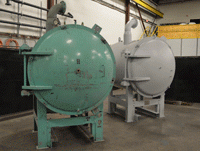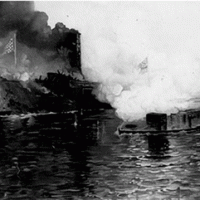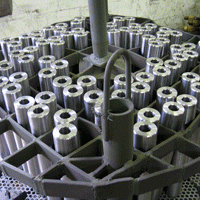The purchase of a vacuum furnace involves a considerable capital investment. As a result, the question of buying a used furnace at a lower cost than a new furnace is a fairly common one. However, there are a number of potential issues with used equipment that should underscore the warning “buyer beware”. To begin with, good used vacuum furnaces are a rare commodity. When they do appear on the market, they don’t last long. Many of the best are purchased through industry networking and never reach the general market. Still, there are numerous dealers of used furnace equipment with inventories posted on their websites.
Most used furnaces are sold on an as-is, where-is basis with no manufacturer’s warranty. If a decent used candidate is located, there are a few very important items to investigate before purchasing. One of the biggest and most difficult to detect problems with used furnaces is the condition of the water jacket in the vacuum chamber. The life of a properly maintained vacuum chamber can be well over twenty years. However, in situations where the furnace cooling system has been connected to an untreated water supply, water jacket blockages from mineral build-up can begin to appear in as little as three years. Beyond dissecting the vacuum chamber, there are no fool-proof methods for detecting blockages. Ultrasonic testing is sometimes used but can be expensive and unreliable. The presence of blistered or discolored paint on the outside of the chamber is a good indication of hot spots due to blockage. Perhaps the best approach is to avoid altogether used furnaces more than twenty years old. If water jacket blockage problems arise after purchase, the only sure solution is re-lining the chamber at considerable time and expense. BY JEFF PRITCHARD



